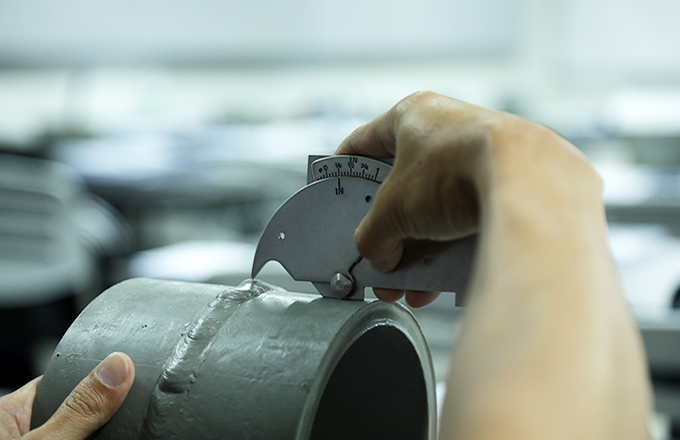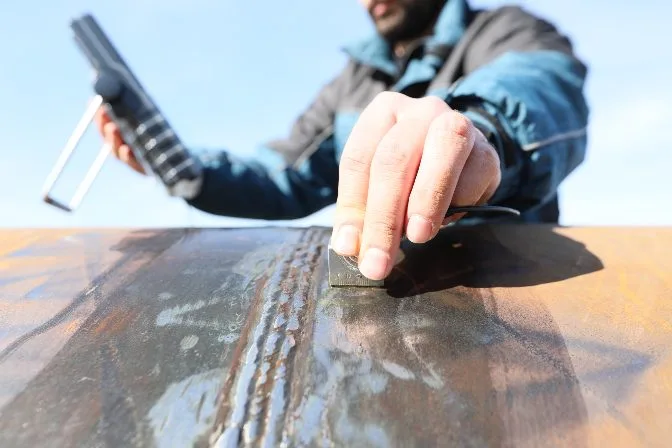The Necessary Function of Welding Examination: Understanding the Treatments, Equipment, and Requirement That Govern High Quality Analysis in Welding Procedures
Welding inspection is a crucial part of quality control in welding operations, guaranteeing the structural honesty and security of welded assemblies. By employing a series of procedures, from pre-weld evaluations to advanced non-destructive testing methods, examiners methodically examine weld quality against rigid sector requirements. The equipment used in these procedures is vital for identifying prospective defects that might endanger performance. Understanding the interaction in between inspection approaches and regulative compliance raises crucial inquiries regarding the difficulties encountered in keeping these important procedures. What implications do these variables carry the general effectiveness of welding operations?
Importance of Welding Examination
Welding inspection is essential in making certain the integrity and security of bonded structures, as it frequently works as the last checkpoint before components are taken into solution. The significance of this evaluation depends on its capacity to identify prospective issues that might endanger the performance and durability of welded joints. Offered the high stakes involved, specifically in sectors such as building and construction, aerospace, and auto, thorough evaluation procedures are important.
Welding flaws can arise from numerous elements, consisting of incorrect strategies, insufficient devices, or unsuitable products. Failing to spot these issues can result in devastating consequences, including architectural failures, which might cause injury, loss of life, and significant economic obligations. Welding evaluation gives a systematic technique to assess the quality of welds, guaranteeing compliance with market standards and governing demands.
Additionally, reliable welding assessment adds to boosting overall performance by reducing rework and guaranteeing that tasks stay on time. By cultivating a society of top quality assurance, organizations can likewise boost their reputation and client trust fund. Essentially, the importance of welding inspection can not be overemphasized, as it plays a crucial duty in guarding both human lives and investments in facilities.
Trick Inspection Treatments
An extensive technique to evaluation treatments is essential for making certain the quality and reliability of bonded joints. Efficient examination begins with pre-weld evaluations, which include reviewing welding specifications, material properties, and joint layouts to determine possible difficulties. This preparation phase establishes a standard for quality expectations.
Throughout the welding procedure, in-process evaluations are essential. Inspectors check criteria such as warmth input, traveling rate, and electrode angle to ensure conformity with recognized requirements. Aesthetic evaluations are the very first line of defense, enabling the recognition of surface issues, such as cracks, porosity, or incomplete fusion.
Post-weld examinations entail even more innovative strategies to analyze the integrity of the joint. This might include non-destructive testing (NDT) approaches such as ultrasonic screening, radiographic testing, or magnetic particle screening. These strategies provide much deeper understandings right into the inner structure of the weld, exposing prospective imperfections that might not show up on the surface.
Paperwork plays an integral duty throughout the evaluation procedure. In-depth records of inspections, including findings and corrective actions, guarantee traceability and accountability, eventually contributing to continuous improvement in welding techniques and general quality control.
Important Devices for Inspection
Reliable examination counts on using specific devices created to review the high quality and honesty of bonded joints. Secret devices in this procedure include visual inspection devices, such as amplifying borescopes and glasses, which allow examiners to determine surface area defects and irregularities. Additionally, ultrasonic testing (UT) equipment plays a crucial function by using high-frequency acoustic waves to detect interior problems within welds, making sure that hidden weaknesses are determined before they bring about failing.
Radiographic testing (RT) is one more vital technique, utilizing X-rays or gamma rays to produce pictures of the welds, exposing inner problems that might not show up with various other inspection methods - Houston Welding Inspection. Magnetic fragment screening (MT) is employed for ferromagnetic products, permitting examiners to locate surface and near-surface defects by using magnetic areas and fine particles
Dye penetrant screening (PT) is additionally substantial, entailing the application of a fluorescent color to reveal surface area splits and suspensions. Each of these strategies and devices adds to a comprehensive inspection technique, guaranteeing that welded structures fulfill the needed high quality requirements and stay safe for use in their particular applications.

Market Criteria and Regulations
Quality control in welding inspection is considerably affected by market criteria and guidelines that control techniques and ensure safety and security. These criteria act as benchmarks for quality, outlining the needed protocols for screening, inspection, and paperwork. Trick organizations such as the American Welding Society (AWS), the American Society of Mechanical Designers (ASME), and the International Company for Standardization (ISO) establish guidelines that welding specialists need to abide by throughout the assessment process.
Compliance with these standards is not only an issue of regulatory obligation but additionally an essential part of risk administration in welding operations. They incorporate different aspects, including material selection, welding methods, and credentials of workers. AWS D1.1 details architectural welding demands, while ISO 3834 specifies top quality needs for welding processes.
Furthermore, market regulations determine the necessary certifications for welding inspectors, demanding accreditations that affirm their know-how. This placement with requirements ensures that examinations are done consistently and accurately, inevitably safeguarding the integrity of welded structures. Sticking to these market requirements and regulations is critical in promoting functional efficiency and keeping public trust fund in welding practices.
Obstacles in Welding Inspection


Welding examination faces numerous obstacles that can affect the reliability and safety of welded structures. One considerable difficulty is the complexity of the welding processes themselves, which can vary substantially depending on products, joint setups, and environmental conditions. This irregularity demands a detailed understanding of varied examination methods and their proper applications.
Another obstacle exists in the developing nature of welding technology. As new products and techniques are presented, examiners need to constantly upgrade their expertise and abilities to efficiently examine the top quality of welds. In addition, the physical ease of access of weld areas can hinder evaluation initiatives, particularly in constrained or high-risk settings.
Furthermore, human factors play an essential role in welding evaluation. Houston Welding Inspection. The subjective nature of visual evaluations can result in incongruities, as different click for info assessors might interpret the exact same weld in different ways. This emphasizes the relevance of standardized training and accreditation for inspectors to guarantee a consistent strategy their explanation to high quality evaluation
Lastly, the assimilation of innovative innovations, such as automated evaluations and man-made intelligence, provides both challenges and possibilities. While these innovations can boost precision and performance, they also call for considerable financial investment and competence to carry out efficiently. Attending to these difficulties is essential for maintaining the integrity of bonded structures.
Conclusion
Welding evaluation is crucial for making certain the safety and security and honesty of welded structures. Inevitably, a durable welding inspection framework not just guarantees conformity with laws yet likewise improves general functional efficiency and reliability. Houston Welding Inspection.
Welding examination is an important part of quality assurance in welding operations, guaranteeing the architectural stability and security of bonded settings up.Welding inspection is important in making certain the honesty and security of bonded frameworks, as it frequently offers as the last checkpoint prior to components are placed right into service. Welding evaluation provides a methodical strategy to assess the top quality of welds, ensuring compliance with market standards and governing needs.
Quality assurance in welding inspection is significantly affected by industry standards and regulations that regulate practices and make certain security. Secret companies such as the American Welding Culture (AWS), the American Culture of Mechanical Engineers (ASME), and the International Company for click here for more info Standardization (ISO) develop guidelines that welding specialists need to adhere to throughout the evaluation procedure.